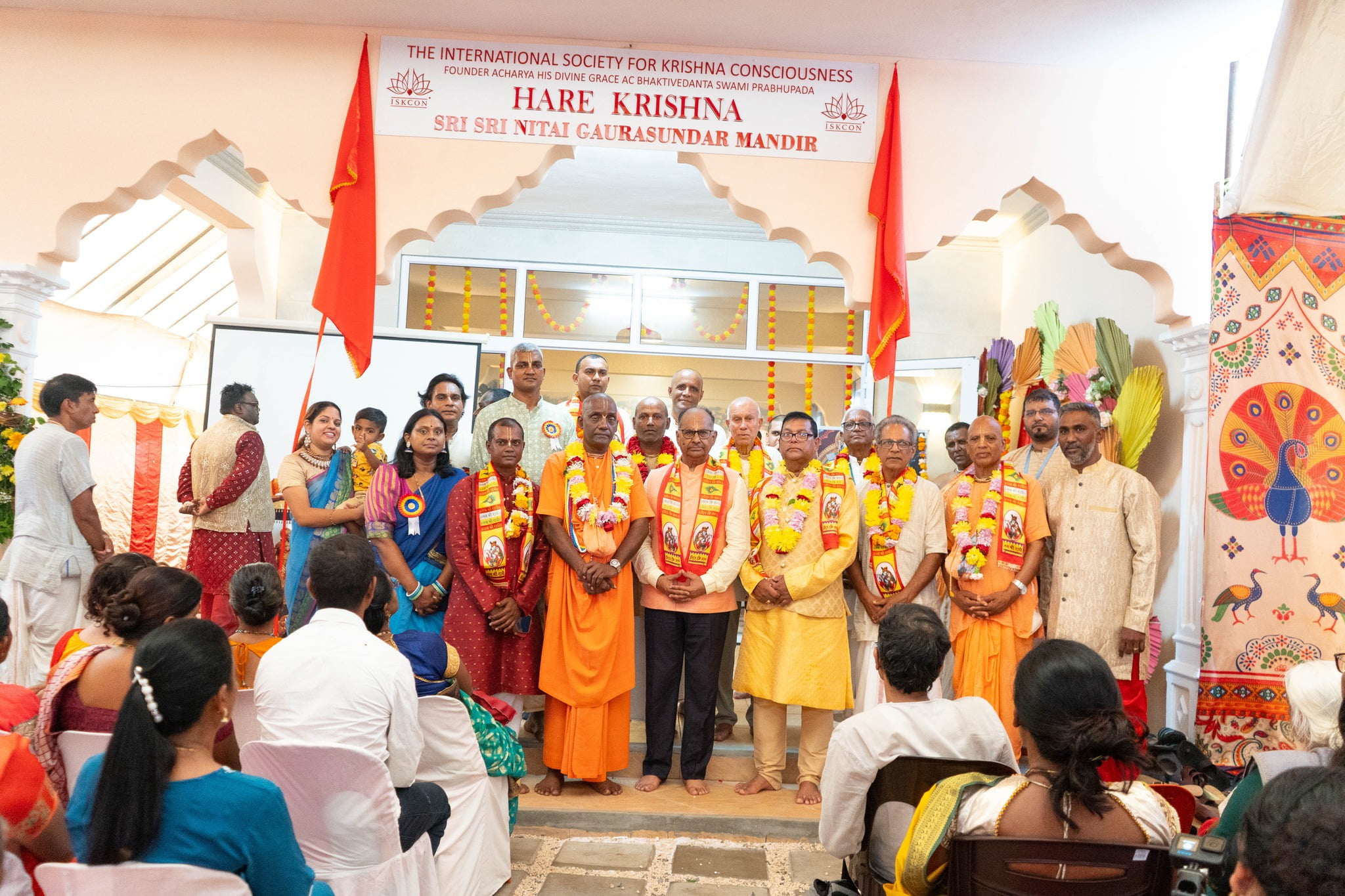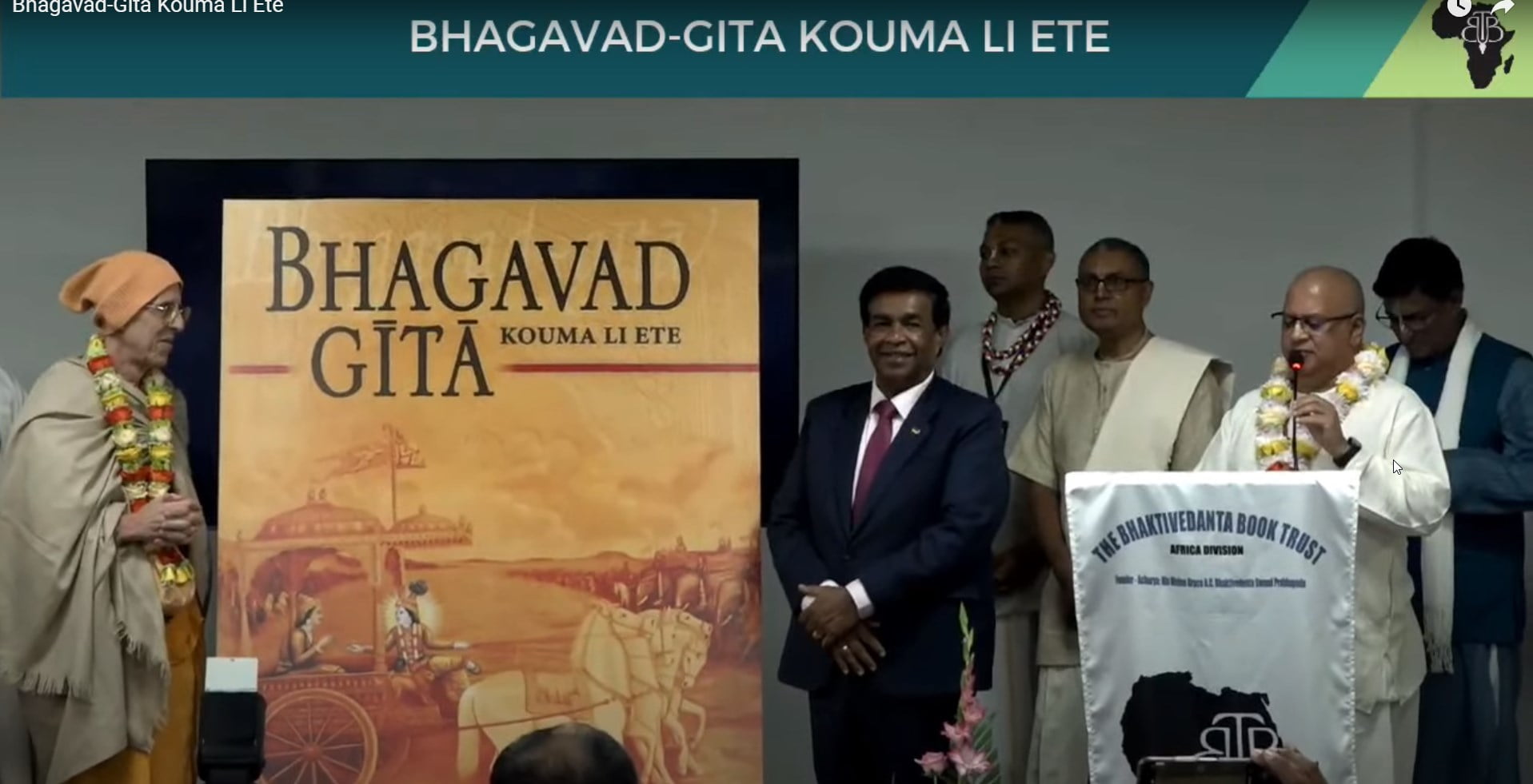Visakha Dasi’s Honest New Memoir Brings Mainstream Readers on a Spiritual Journey
By Madhava Smullen | Dec 23, 2016

In a sea of inspiring memoirs by ISKCON devotees about Srila Prabhupada and coming to Krishna consciousness, Visakha Dasi’s new book is unique because it’s aimed not internally but at a broad mainstream audience.
“The book starts where I started, which was entirely materialistic life, and then goes gradually through the experiences and thoughts that I went through, with the hope that readers will come with me each step of the way,” she says. “Then, even if they don’t agree with my conclusion, they can understand it.”
The memoir is entitled ‘Five Years, Eleven Months’ after the amount of time between the day Visakha was initiated by ISKCON Founder Srila Prabhupada, and his passing.
But it starts before that, at the very beginning of Visakha’s life. Born Jean Papert in New York, she was raised in Long Island and had a very typical suburban life.
“What was somewhat atypical at the time was that both my parents were atheists – so my brother and I were atheists too, and very adamant ones,” she says. “I wasn’t interested in spiritual life at all, what to speak of something as ‘eccentric’ as Krishna consciousness.”
Somehow or other, though, in 1970 she landed an assignment writing an article about the Hare Krishnas for Asia Magazine, with her college friend John Greisser – who later became her husband Yadubara Das – taking the photographs. The two lived for a week at the ISKCON Brooklyn temple to get the authentic experience.
In her book, Visakha is honest about her first, less-than-enthusiastic impressions of the devotees. “ ‘We were preached to by the temple president, who was as delicate as a charging rhinoceros,’” she writes.
While living in the ashram, she says, she found the devotees hard to relate to. “They would talk to me without really connecting with me, and didn’t seem to care if I was understanding what they said at all,” she recalls. “And the prasadam was very austere – oatmeal served on wax paper, that would ooze off the edges. It was bizarre. I lost seven to ten pounds in one week!”
Still, when Yadubara went to India with the first group of devotees to do his Masters Thesis on ‘The Hare Krishna People,’ Visakha accepted his invitation to join them in early 1971.

Prabhupada in his room at Radha Damodar Mandir during Kartika in 1972.
“India was very new for me,” she says. “I didn’t really know what the term third world country meant until I landed in the Bombay airport, and saw workers loading earth into woven baskets that ladies carried on their heads in single file. And the weather was extremely hot and humid, like walking around in a wet sponge.”
There, Srila Prabhupada was appearing at the Cross Maidan Pandal event in the heart of Bombay. Yadubara and Visakha attended it, and also met Srila Prabhupada privately for the first time. The experience couldn’t have been more different from their first encounter with his well-meaning yet fanatical novice disciples.
“Prabhupada was very gentlemanly,” Visakha recalls. “Yadubara, then John, handed him a how-to-photography book I had published, and Prabhupada went through the whole book, page by page. I could see he really liked books, and that from the way he was handling it and looking at it, he knew all about them – about quality of printing, paper, and binding. He showed so much interest, and the whole time, he didn’t speak anything about Krishna, which was very unusual for him. But it was perfect for me, because I didn’t want to hear anything about Krishna at the time.”
Later, when Prabhupada left to embark on a world tour, Yadubara and Visakha wanted to stay in India and do a photographic essay on a quaint Indian village that didn’t rely on modern technology. When they ran the idea by Prabhupada, he advised them, “Best that you go to Vrindavan and do your story there.” Again, he didn’t push them to become devotees.
But it was the month they spent in Vrindavana that truly transformed Visakha, opening her mind and heart to theism and devotion.
“There was a language barrier, but from what I could see, the people there didn’t have the same goals for profit, adoration and distinction that I was exposed to in the West,” she says. “Yet they seemed much happier than people in the West. I spent a lot of time with the Vrindavana widows, and they would chant the maha-mantra every morning. Then I’d see them doing their business around town in the afternoon, and they just seemed so satisfied to me. They had reached a place that I was completely unaware of. And I became very curious about that place.”
Wanting to find out more, Visakha and Yadubara moved into the ISKCON temple in Calcutta and began reading Prabhupada’s books. And when Prabhupada visited soon after, all the philosophy he spoke resonated in a very relevant and practical way, now that they had seen it in practice in Vrindavana.
Visakha sometimes still had to struggle with the dichotomy between what Prabhupada said and did, and what his followers were saying and doing. For instance, she describes how men interpreted statements in Prabhupada’s books as misogyny and carried them out as such, whereas Prabhupada himself – the author of the statements – was “completely accommodating, accepting and encouraging to women.”
“Perhaps there was a harshness that comes with being so new in Krishna consciousness, and trying to give up what we’ve been doing for so many years until that point,” she reflects. “I think that the tug between what we wanted to be, compared to what we were was something we all had to deal with, within ourselves and with those devotees around us.”
Fortunately, Visakha says there were also many wonderfully inspiring and encouraging disciples of Srila Prabhupada, who had imbibed his mood more successfully than others. And these helped her advance in her Krishna consciousness.
None, however, were more encouraging than Prabhupada himself. Recalling a time when Prabhupada took the time to read an article she had written and offered motivational words, she says, “His desire and ability to encourage were extraordinary, and the effects of his encouragement lasted a lifetime. It was so potent. It’s almost inexplicable – other encouragement doesn’t last as long or have the kind of impact that Prabhupada’s did.”

The inspirational widows of Vrindavan singing kirtan
“Five Years, Eleven Months” shows firsthand the effects of his encouragement. After Visakha’s introduction to Krishna consciousness, most of the book follows her as she travels extensively with Prabhupada as a photographer.
She’s with him as he attends key events like the installations of Sri-Sri Krishna-Balarama in Vrindavana, Sri-Sri Radha-Paris-Isvara in Paris, and Sri-Sri Radha-Gokulananda at Bhaktivedanta Manor, as well as major Rathayatras in San Francisco and New York. She listens as he has remarkable conversations with important personalities like professors and clergymen. And she shares anecdotes about what he said and did, how she felt around him.
Along with the narrative are around fifty photographs of Prabhupada, India and the devotees of that time by professional photographers Visakha and Yadubara, carefully selected to be the most touching and aesthetically pleasing.
The book has already made a deep impression on devotees who have gotten to preview it. “The honesty and introspection is refreshing,” says Prabhupada disciple Rucira Dasi, adding, “It gives a vision of the power of association with the Lord’s pure devotee.”
Giriraj Swami called it “a brilliant work of introspection, candor, narrative and hope,” and said, “Visakha’s insights into her conditioning and her efforts to achieve transcendence gave me tools with which to evaluate my own conditioning and attempts in Krishna consciousness.”
Meanwhile “Five Years…” looks set to reach a mainstream audience too, as Visakha hopes. “Brilliant photographs … a talented writer … her descriptions are lyrical and evocative,” wrote Kirkus Reviews. And Visakha’s open and honest approach to spirituality, and account of her journey from atheism to theism is very relateable.
“For me what was attractive was the basic idea that this body is a vehicle for us as spiritual beings, and that we have this incredible relationship with the Supreme Spirit, Krishna,” she says. “And through that relationship, we can have an extraordinary relationship with His creation, and the other people in His creation.”
“I hope that by following my journey readers will see the validity of Krishna consciousness, and consider it as something they could take seriously,” Visakha concludes.
* * *
Five Years, Eleven Months is available for pre-order now at https://www.amazon.com/gp/product/1522838449. It will be released on February 1st, 2017.












